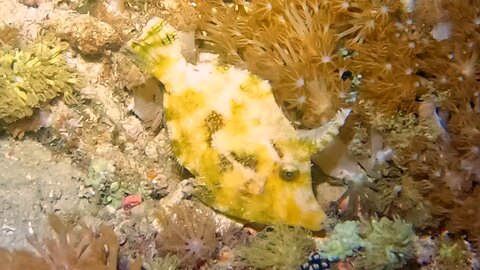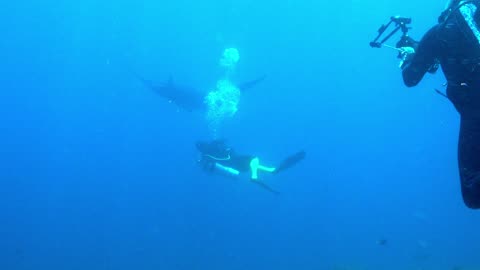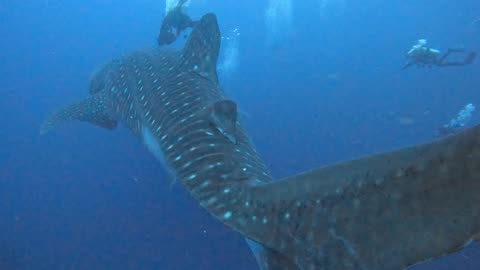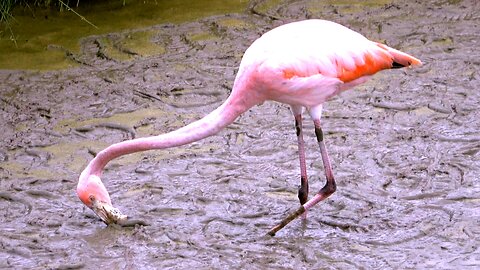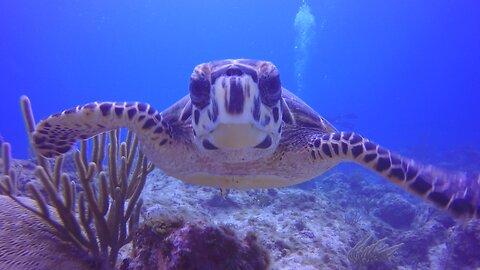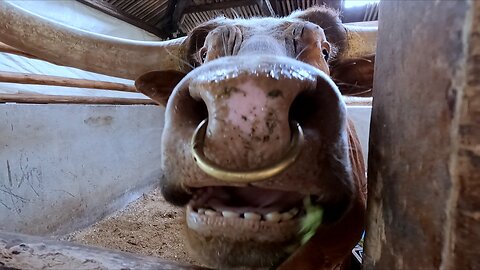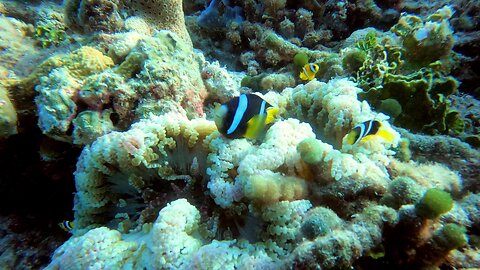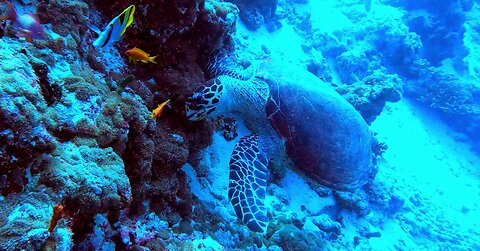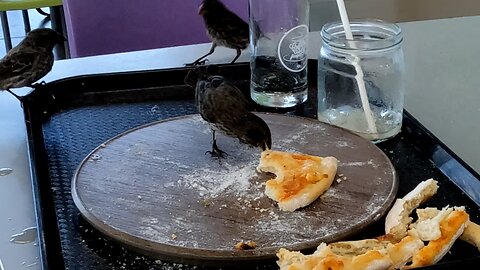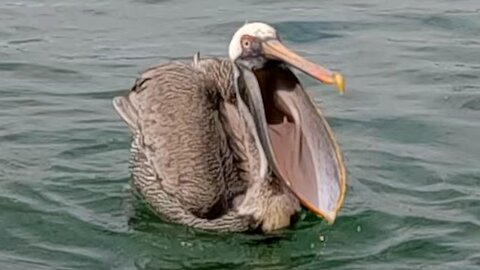Premium Only Content

Fan-bellied leatherjacket is a bizarre looking animal
Giant manta rays give scuba divers beautiful close up experience
Majestic horses run free in the meadow on a sunny day
Breathtaking beauty of British Columbia captured from above
Curious manta rays circle around delighted scuba divers
Gigantic fishing spider is one of nature's best scuba divers
Monstrous whale shark dwarfs scuba divers in the Galapagos Islands
This stunning lighthouse is the easternmost point of North America
Ostrich gives epic performance but fails to get the girl
Daisy the bunny munches noisily on a treat and it's too cute!
Lion brothers meet affectionately on the African Plain
Flamingo feeds in an unusual manner to extract shrimp from mud
Determined fish works hard to catch crab hiding in rocks
Mighty leopard stops to have a big drink at watering hole
Young hawksbill sea turtle follows scuba diver over the coral reef
African farmer and her son upload videos to pay for his education
Sanctuary bull with intimidating horns asks guest for a head scratch
This steel safe killed one of America's most famous men
The beauty of Canada from one coast to the other
Heart warming close look at a calf's entry into the world
Anemone fish can live where few other fish can
Surprising footage captured by child on African bus ride
Endangered hawksbill turtle casually eats as scuba divers look on
Olive baboons show their ferocious teeth as they playfight
Venomous emperor sea urchin is one of the most ornate sea creatures
Smooth green snake is one of the most beautiful in North America
Tiny finches feast on leftover airport pizza in the Galapagos Islands
One of the the ocean's most bizarre animals; the beaded sea cucumber
Sanctuary goats go crazy for green bananas from guests
Pelican shows off his impressive fishing skills and huge beak
Gigantic humpback whale rises beside mesmerized swimmer in Tonga
Badlands salt flats look like an alien landscape when seen from the air
Pacific green turtle calmly eats as scuba diver watches enthralled
Orioles are one of the most vividly colored birds in North America
Flash flood washes out road in Kenya, Africa
Chickens happily enjoy a feast on farm in Kenya, Africa
Dramatic sunset footage of ominous lightning storm approaching harbor
Old world pomegranate juice vendor has been serving fresh juice here for 50 years
Close up look at the most high powered eyes on the planet
Mighty leopard caches deer in a tree to keep it safe for later
The beautiful and fascinating strawberry nudibranch
Child giggles with delight as she sails over a waterfall in Ecuador
Anemone fish can live where few other fish can
Sea anemones are predatory animals that anchor to the coral and sway in the ocean current as they search for food. Their tentacles can resemble the long leaves of a plant as they grasp at fish and small animals that serve as food for the sea anemone. In some species, the tentacles are much shorter. The tentacles contain stinging cells that are equipped with an external sensory hair. When triggered, the cells fire a harpoon-like barb and inject a toxin. This can be used as defense or for hunting. Small fish and other marine animals become paralyzed and are then devoured by the sea anemone.
But there are fish that are immune to the sting of the sea anemone. Clown fish and anemone are well known exceptions, with their mucous that prevents the activation of the sea anemone's stingers. Clown fish are the best known, but not the only fish with the ability to produce this mucous. There are a few other species that are referred to as anemone fish. These two are the Fiji anemone fish. They live among the deadly anemones, taking cover at the slightest sign of a threat. Predators don't dare follow the anemone fish into the tentacles and the small fish are safe within.
These fish continuously rub up against the tentacles, even when predators are not near. The contact with the anemone helps them accumulate mucous which combines with their own mucous to produce the substance that masks their presence from the stinging cells.
The anemone benefits from the fish in a perfect example of a symbiotic relationship. The anemone fish becomes aggressive and chases other fish away that might nibble at the tentacles of the anemone. The fish excrement provides the anemone with nutrients. The entire arrangement is a win-win situation for both animals.
Anemone fish are loyal to an anemone, remaining in the same location and protecting their host. Often found in groups, there will be one breeding male and one breeding female. If the female dies, the male will turn into a female and the largest non-breeding male will assume the role of being the male breeder.
Anemone fish feed primarily on zooplankton that drift past on the ocean currents. As expected, these fish were found on the reef surrounding an island in the Republic of Fiji.
-
 1:57
1:57
WildCreatures
11 days ago $7.11 earnedCurious wild deer comes to share a snack with man in forest
45.7K15 -
 12:23
12:23
Exploring With Nug
21 hours ago $2.69 earnedSUV Found In Private Pond While Searching For Missing Man!
16.4K1 -
 53:57
53:57
Tactical Advisor
5 hours agoUnboxing New Guns and Mystery Box | Vault Room Live Stream 033
39.1K5 -

Mally_Mouse
2 hours agoSpicy Saturday!! - Let's Play: Chained Together
9.13K1 -
 1:15:16
1:15:16
Jeff Ahern
7 hours ago $9.43 earnedThe Saturday Show with Jeff Ahern
39.5K7 -
 LIVE
LIVE
a12cat34dog
4 hours agoELIMINATING ALL CRIME :: RoboCop: Unfinished Business :: FINISHING THE DLC {18+}
169 watching -
 1:38:52
1:38:52
Michael Franzese
20 hours agoEpstein. Diddy. Coverups. What the Government Isn’t Telling You
79.9K178 -
 LIVE
LIVE
SilverFox
5 hours ago🔴LIVE - Elden Ring - Stream Doesn't End Until We Beat The Game
74 watching -
 LIVE
LIVE
WorldofGaming
17 hours agoMario Party Unleashes the Madness!
45 watching -
 2:23:40
2:23:40
Robert Gouveia
10 hours agoObama Traitors get CRIMINAL REFERRAL! Motion to UNSEAL! Rupert Murdoch SUED!
66.3K125
